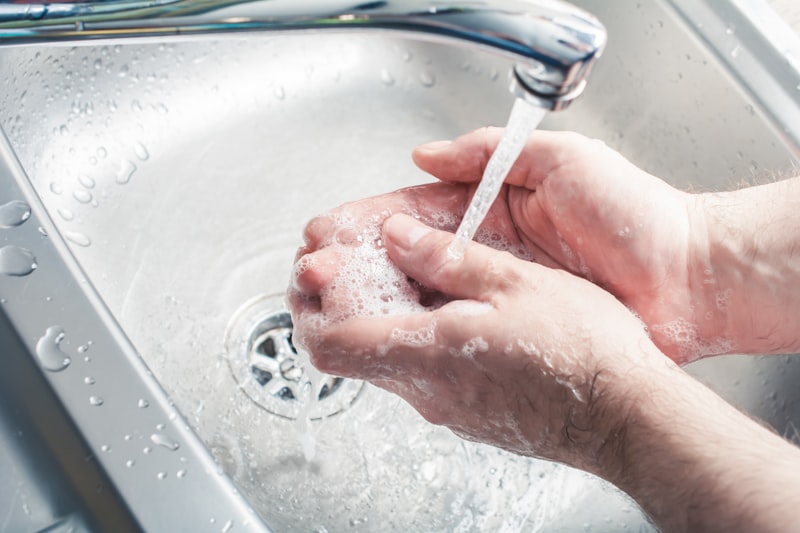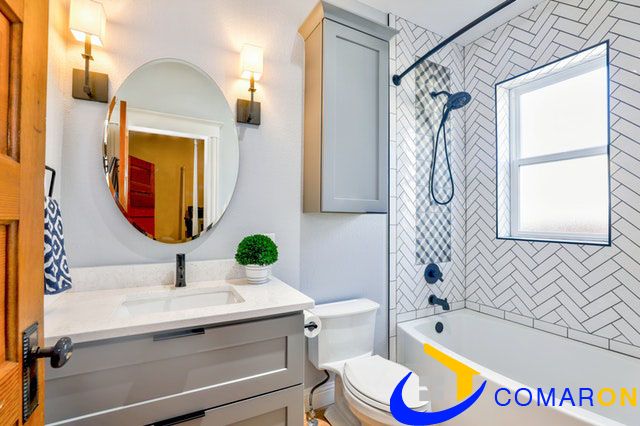
That constant drip from your bathroom faucet. The frustrating low water pressure during your morning shower. The mysterious puddle appearing under your sink. These common bath fitting problems disrupt daily routines and waste precious water and money.
Most bathroom fitting issues stem from a handful of predictable causes, and many can be resolved without calling a plumber. This guide walks you through diagnosing and fixing the most frequent problems homeowners face with their bath fittings.
The Dripping Faucet Mystery
A dripping faucet seems minor but wastes surprising amounts of water. One drip per second adds up to roughly 3,000 liters annually, directly impacting your water bill. The culprit is usually a worn cartridge inside the faucet body.
Modern faucets use cartridges to control water flow. Over time, mineral deposits from hard water accumulate on these cartridges, preventing proper sealing even when closed. Think of replacing a faucet cartridge like changing batteries in a remote, it is regular maintenance rather than a sign of poor quality.
Quick Fix for Dripping Faucets
Start by shutting off water supply valves under your sink. Remove the faucet handle by loosening the set screw, usually hidden under a decorative cap. Pull out the old cartridge and take it to your local hardware store to find an exact match. Installation reverses the removal process.
For three-hole faucets with separate hot and cold handles, identify which side drips by shutting off one supply line at a time. If the drip stops when you close the cold supply, replace the cold side cartridge.
Hard Water Damage and Mineral Buildup
Indian water supplies often contain high mineral concentrations, particularly calcium and magnesium. These minerals create multiple problems including white crusty deposits around faucets, reduced water flow, and corroded internal components.
Mineral buildup narrows pipes and clogs aerators, the small mesh screens at faucet tips. This restriction reduces water pressure and creates uneven spray patterns. In severe cases, mineral deposits form inside pipe joints, making future repairs difficult and potentially requiring pipe replacement.
Addressing Mineral Deposits
For external buildup, soak affected areas with white vinegar for several hours. The acetic acid in vinegar dissolves calcium and magnesium deposits. Stubborn accumulation may require specialized lime removers available at hardware stores.
Remove faucet aerators monthly and soak them overnight in vinegar to prevent flow restrictions. This simple maintenance step extends fitting life and maintains consistent water pressure. For homes with persistent hard water issues, installing a whole-house water softener addresses the root cause rather than treating symptoms repeatedly.
Low Water Pressure Troubleshooting
Weak water flow frustrates everyone, but the cause often hides in plain sight. Before assuming complex plumbing issues, check these common pressure reducers.
Clogged aerators cause most low pressure complaints. Unscrew the aerator from your faucet tip and inspect for debris or mineral buildup. Clean thoroughly or replace if damaged. Aerators cost minimal amounts but dramatically impact water flow.
Supply line shut-off valves sometimes sit partially closed after repairs or maintenance. These small valves under sinks should be fully open, turned counterclockwise until they stop. Even partially closed valves significantly reduce pressure.
When Low Pressure Indicates Bigger Problems
If cleaning aerators and checking valves does not help, the issue may involve corroded pipes or leaks within walls. Galvanized steel pipes, common in older Indian homes, corrode internally over decades, narrowing water pathways.
Notice if hot water pressure alone is weak. This points to water heater issues rather than general plumbing problems. Check if the heater shut-off valve is fully open and consider flushing the tank to remove sediment buildup.
Leaking Supply Lines and Connections
Water pooling under sinks typically originates from supply line connections. These flexible tubes connecting shut-off valves to faucets develop leaks from loose fittings or degraded washers.
Tighten connections using an adjustable wrench, but avoid overtightening. Excessive force cracks plastic fittings and damages threads. Hand-tight plus a quarter turn usually suffices for plastic connections.
When to Replace Supply Lines
Braided stainless steel supply lines outlast cheaper plastic or rubber alternatives. If your lines show age, corrosion, or visible damage, replacement prevents future headaches. Always replace supply lines as complete units rather than attempting repairs.
Rubber washers inside connections deteriorate over time, especially with temperature fluctuations. These washers are inexpensive and easy to replace, often solving persistent slow leaks.
Shower Problems and Solutions
Uneven spray patterns, reduced pressure, or temperature fluctuations plague many showers. Mineral deposits clog showerhead nozzles just like faucet aerators.
Remove the showerhead and soak it overnight in vinegar to dissolve deposits. For fixed showerheads that cannot be removed, fill a plastic bag with vinegar, secure it around the showerhead with a rubber band, and leave overnight.
Temperature Control Issues
Sudden temperature shifts during showers often result from pressure imbalances when someone uses water elsewhere in your home. Modern thermostatic mixing valves prevent these fluctuations by automatically adjusting hot and cold water ratios.
If your shower handle feels stiff or difficult to operate, internal parts may need lubrication or replacement. Most shower cartridges can be replaced without extensive plumbing knowledge, though having the correct replacement part is essential.
Preventive Maintenance That Saves Money
Regular attention prevents most bathroom fitting problems from developing. These simple habits extend fitting lifespan and maintain performance.
Clean aerators and showerheads quarterly in hard water areas. This prevents severe buildup requiring aggressive cleaning or replacement. Keep vinegar handy specifically for this purpose.
Inspect under sinks monthly for moisture, early leak detection, or loose connections. Catching small leaks early prevents water damage to cabinets and flooring, saving substantial repair costs.
Exercise shut-off valves twice yearly by closing and reopening them. Valves rarely used for years may seize, breaking when you need them during emergencies. This simple action keeps valves functional.
Knowing When Professional Help Is Needed
While many bathroom fitting issues are DIY-friendly, some situations require professional plumbers. Recognize these scenarios to avoid worsening problems.
Leaks behind walls create hidden damage before visible signs appear. Water stains on walls or ceilings, musty odors, or unexplained high water bills suggest concealed leaks needing professional detection equipment.
Corroded pipes require replacement rather than temporary fixes. If your home has galvanized steel plumbing older than 40 years, consider systematic replacement to prevent frequent failures.
Persistent low pressure affecting multiple fixtures simultaneously indicates main line issues beyond typical homeowner scope. Professional assessment identifies whether the problem lies within your property or with municipal supply.
Choosing Quality Replacement Parts
When replacing bathroom fittings or components, quality matters significantly. Cheap faucets and valves fail quickly, creating frustration and additional expense.
Brass fittings resist corrosion better than zinc alloys or plastic alternatives. While brass costs more initially, superior longevity justifies the investment. Stainless steel also offers excellent durability, particularly for supply lines and surface-mounted hardware.
Brand reputation provides guidance when selecting replacements. Established manufacturers like Jaquar, Hindware, or Cera maintain consistent quality standards and offer better warranty support. Emerging brands like Ruhe and LIPKA combine quality with competitive pricing, making them viable options for budget-conscious renovations.
Conclusion
Most bathroom fitting problems are neither mysterious nor require expensive professional intervention. Understanding common issues like cartridge wear, mineral buildup, and connection leaks empowers you to maintain your bathroom effectively.
Regular maintenance prevents most problems from developing. When issues do arise, systematic troubleshooting usually reveals straightforward solutions. Investing in quality replacement parts and addressing small problems promptly protects your home from costly damage while ensuring bathroom fixtures serve reliably for years.
Keep basic tools handy, including adjustable wrenches, replacement washers, and vinegar for cleaning. With these resources and knowledge of common issues, you can resolve most bathroom fitting problems quickly and confidently.

